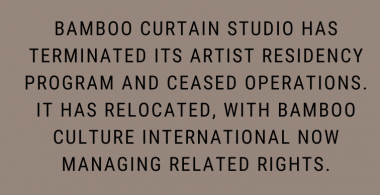Tsai Kuen-Lin
Born in Tainan, Taiwan, in 1979, Tsai Kuen-Lin holds an MFA degree from the Graduate School of New Media Art, Taipei National University of the Arts. He has been invited as the artist-in-residence in Kogannecho, Yokohama, Japan; and his works have been collected by White Rabbit Gallery (Australia), Taiwan Design Center, etc. While using plastic pipes to create his works, he also uses wood as materials and creates two-dimensional paintings in recent years. His work guides the audience to take part in the issues he concerns about in the process of participation. Kuen-Lin was nominated by Bamboo Curtain Studio. In fall 2015, the Cleveland foundation awarded him three months residency with Waterloo Art Gallery.
Artist Statement
For me, the process is always much more important than the outcome, whether it is about facing life or regarding art creation. Similarly, the quality of the relationship between people is determined by the continual interactions between them after the moment of encounter, meaning the process determines the final quality. However, nowadays the chance of people meeting one another is greatly reduced as people are spending more time with machines. Through the electronic circuits forming the Internet, one seems to possess the whole world; yet, one might have nothing at all in reality.
Therefore, in the attempt to use my work as a communicative medium, I try to connect two unfamiliar points through my work. The consequent output, invisible might it be, is the valuable result I care about, which is also the core purpose of my art.
The plastic pipes are the most frequently used material in my work because what the material represents fits perfectly for my artistic concept—the pipes do not belong to the beginning or the end; instead, they serve as a medium of connection and communication, a medium that the modern world relies on to sustain its existence. I use its characteristics of “connecting” and extend it into a concept of encounter and organization. By doing so, I introduce the distant sounds to the site through the pipe system, which also functions as a sound-delivering system that connects people for interaction and communication. With the overall design, the installation is designed to invite the audience to physically enter the interactive mechanism of the work without having to put up words of instruction.

